A photo from our series “Math sculptures in context”. To purchase the “cubic with four singularities” model used in the photo and others, follow the links to our producer “shapeways” provided below.
Felix Klein (1849-1925) presented his plaster model of a cubic surface with four singularities in 1872 at Göttingen during a meeting – see our article on Clebsch and Klein in the family room for more information on that very special occasion. In the early 1880s, several versions of this surface became part of Rodenberg’s series of 26 cubic surface models.
Our photo shows a white 3D-printed modern version by MO-Labs, in front of Klein’s portrait. The setting was created in the MO-Labs office, inside a dollhouse built just for taking photos of math sculptures in historical environments. Felix Klein’s portrait is taken from the website of the technical university of Munich. The wallpaper is not a historical design, but a 21st century piece of art which uses typography in a way similar to brush strokes with ordinary paintings. It was created by www.artefont.com.
One of the main features of this object are its four singular points (the most fragile points you can see in the image). Indeed, four is the maximum possible number of singularities on a cubic surface. Klein’s reason for presenting this very special cubic surface at the meeting was his belief that it should be possible to deform this particular example of a cubic surface into any other type of cubic surface (e.g., with other singularities). About one year later, he was able to publish such a result. And nowadays, it is known that an even more striking fact holds related to the sub-diagrams of the so-called Dynkin diagram of the ![]() singularity.
singularity.
We name this surface both after Arthur Cayley and Felix Klein because it was probably Arthur Cayley who first published about an example of a cubic surface with four singularities in the 1840s, though still in a more abstract way than Klein’s concrete plaster model from 1872.
MO-Labs sculptures used: Clebsch’s Diagonal Surface
To purchase our best selling version of the Cayley/Klein cubic surface with four singularities, just use the “buy now” link below. You will be sent to our MO-Labs shop on the “shapeways” website. Note that you won’t be able to choose the material and color there because this particular model is designed at the limit of stability. In particular, we cannot provide this object in a polished and/or dyed version because the polishing process destroys the object at some of its fragile points, the singularities.
Series: Math sculptures in context
This January 2017 photo is part of a monthly series of photos of mathematical sculptures in exceptional settings. We use these and other posts on this site to show, describe, and make available for purchase our several hundred designs of mathematical sculptures.
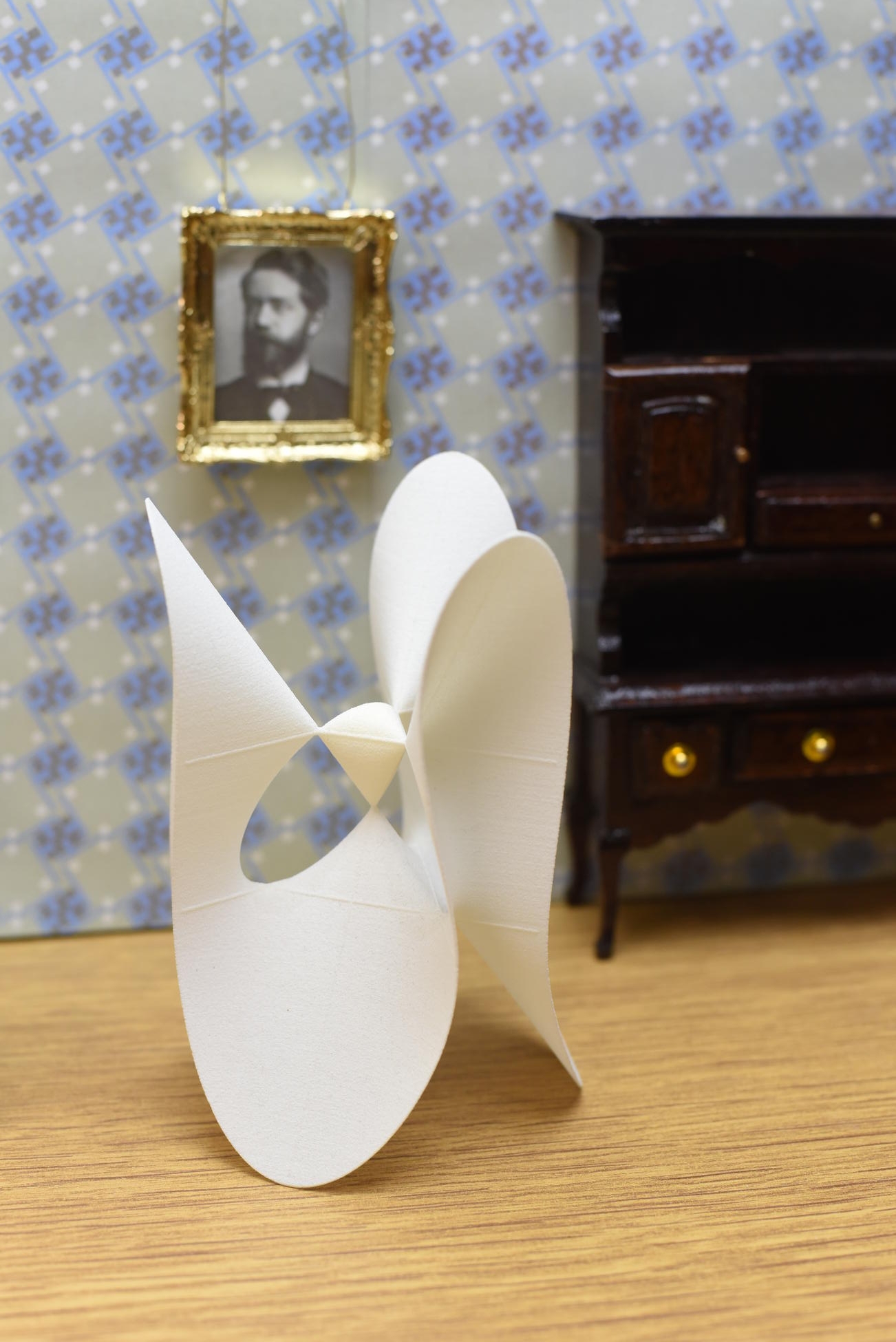
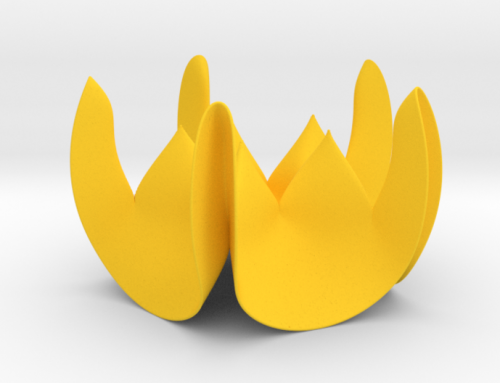
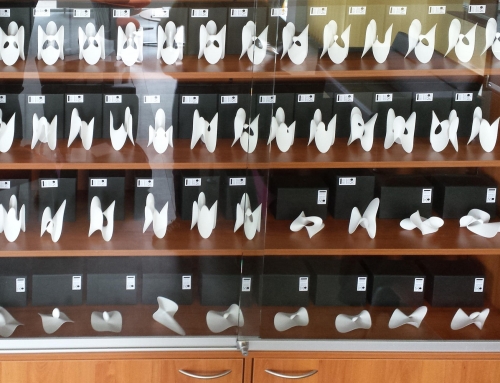
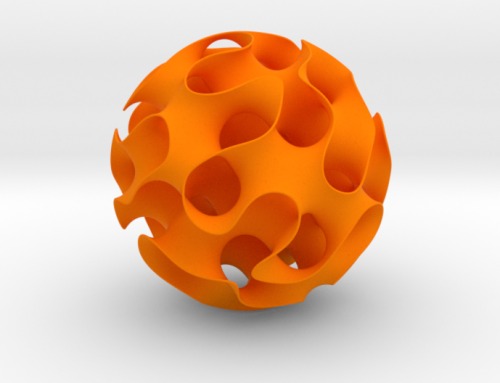
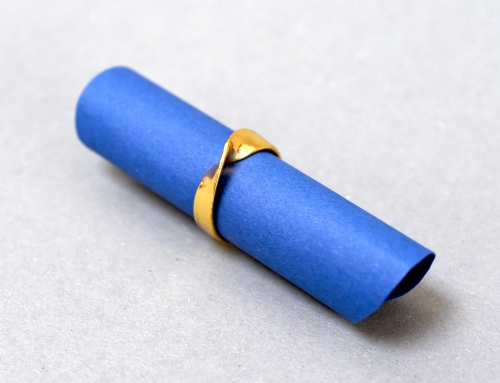
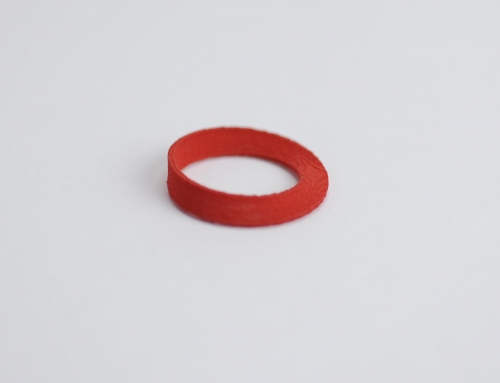
Leave A Comment